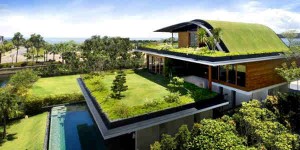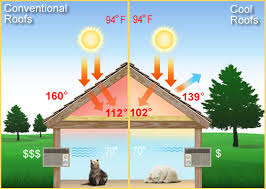Advantages of Cool and Green Designs in Roofing Birmingham Al
Increase in global temperature is an inevitable and direct effect of climate change. However, it is not the only cause of temperature increases; cities create their own heat islands because of rapid urban development. The increase in temperature results to various negative consequences, including poor air quality, increase of heat-related illnesses, increase energy use and increase water consumption.
To combat these undesirable effects of elevated temperature, the construction industry came up with the concepts of cool roofs and green roofs. If you are interested in knowing the positive contributions of these designs in improving the quality of roofing Birmingham Al, we listed them out for you.
What are Green Roofs?
Green roofs are roofs that are either partially or fully covered with living plants. A basic green roof design incorporates a waterproof membrane to keep rainwater out of the building, drainage system for proper water disposal, a layer of soil where plants thrive and the plants themselves that make the roofs green.
This type of roof may be installed in just about every structure, including government, commercial, residential and educational buildings.
Green roofs may be extensive or intensive. Extensive roofs have a thin layer of soil or other medium with hardy, drought-tolerant plants that require minimal maintenance, no pesticides or fertilizers, and minimal human intervention. Intensive roofs act like the traditional park or garden with a wide variety of plants installed.
Benefits of a Green Roof:
- Prolongs the roof service life
- Reduces energy costs to keep the structure cool
- Enhances the aesthetics of the building
- Reduces greenhouse gas emissions
- Reduces urban heat island effect
- Improves the quality of air by reducing pollutants and temperatures
What are Cool Roofs?
Cool roofs are made of different materials – such as roof tiles, shingles, coatings and paints – that reflect the sun’s energy instead of absorbing it. They are designed to reflect sunlight and therefore, absorb less heat than a conventional roof. The roof is characterized by high degree of solar reflectance that decreases heat gain into the structure. A building with a cool roof can have up to 50° to 60°F less temperature than conventional structures. Energy savings are, in fact, one of the direct benefits of a cool roof since the building temperature is lower and requires less energy to cool.
Benefits of a Cool Roof:
- Reduces energy demands and lower building temperatures
- Improves heat management in non-air-conditioned rooms
- Prolongs the duration of roof lifespan by reducing roof temperatures
- Saves energy bills by cutting down on the use of air-conditioners

